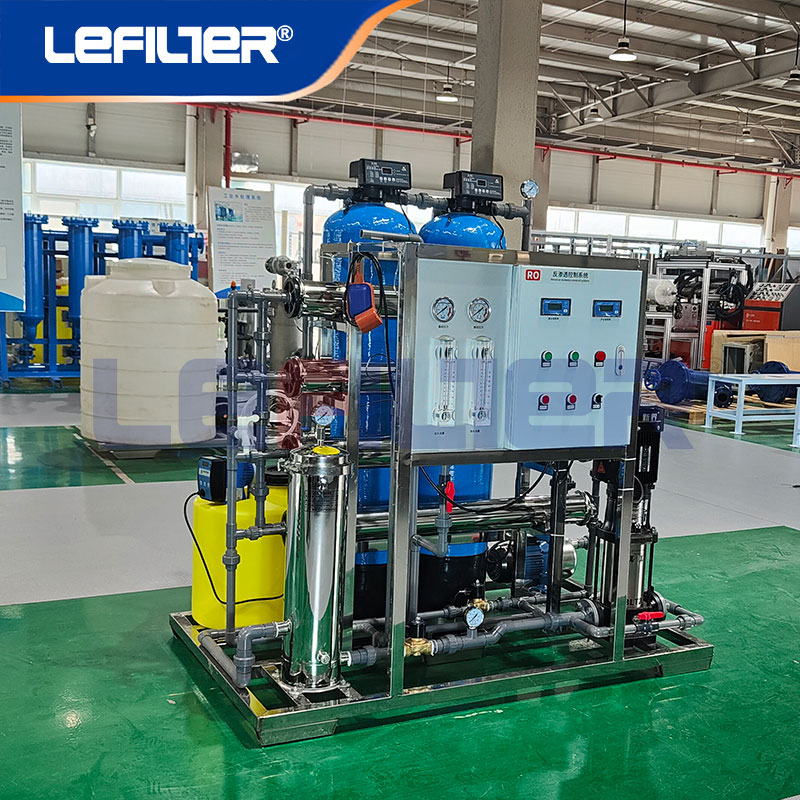Shipbuilders Must Read: How Compact RO Equipment Solves Freshwater Supply Challenges at Sea
DATE:2025-03-31 Number of views: 1 Source:jiaxiangting
In the demanding world of maritime operations, access to clean, reliable freshwater is a critical yet often overlooked challenge. For shipbuilders and vessel operators, integrating an efficient water purification system is no longer optional—it's a necessity. Among the most advanced solutions gaining traction is the reverse osmosis plant, specifically compact RO filtration systems designed for marine environments. This article explores how these innovative systems are transforming freshwater supply for long-haul voyages, ensuring sustainability, cost-efficiency, and operational resilience.
The Growing Demand for Marine Water Purification Systems
With rising global trade and extended sea voyages, ships face mounting pressure to secure independent freshwater sources. Traditional methods like carrying large water reserves or relying on port supplies are impractical and costly. Here, a modern water purification system proves indispensable. By leveraging reverse osmosis (RO) technology, marine vessels can convert seawater into potable water on demand, reducing weight, storage needs, and logistical dependencies.
Compact RO filtration systems are engineered to withstand harsh marine conditions while delivering high-quality output. Their modular design allows seamless integration into tight shipboard spaces—a game-changer for naval architects prioritizing efficiency.

How Reverse Osmosis Plants Work in Marine Settings
A reverse osmosis plant operates by forcing seawater through semi-permeable membranes, removing up to 99.7% of salts, bacteria, and contaminants. Unlike conventional distillation, RO filtration systems require minimal energy, making them ideal for fuel-conscious ship operators. Key components include:
1. High-Pressure Pumps: Drive seawater through RO membranes efficiently.
2. Prefiltration Units: Remove sediments and particulates to protect delicate membranes.
3. Energy Recovery Devices: Cut power consumption by recycling pressurized brine.
For ships, the scalability of reverse osmosis plants ensures adaptability—from small fishing boats to massive cargo carriers.
Advantages of Compact RO Filtration Systems for Ships
1. Space-Saving Design: Traditional desalination units are bulky, but modern RO filtration systems feature streamlined, stackable configurations.
2. Lower Operational Costs: By producing freshwater onboard, vessels reduce port fees and transportation expenses.
3. Environmental Compliance: Stricter IMO regulations on wastewater discharge make reverse osmosis plants a sustainable choice, as they minimize brine pollution.
4. Reliability in Emergencies: In crises like engine failure or extended voyages, a water purification system ensures crew safety and continuity.
Case Study: RO Systems in Modern Shipbuilding
Leading shipyards now prioritize reverse osmosis plants in new builds. For example, a recent retrofit of a Maersk container vessel saw a 40% reduction in freshwater-related costs after installing a compact RO filtration system. Similarly, luxury yachts use these systems to guarantee guest comfort without sacrificing storage space.

Future Trends: Smart RO Technology
The next generation of water purification systems incorporates IoT for real-time monitoring of salinity levels, membrane health, and energy use. Such innovations further solidify RO filtration systems as the cornerstone of marine water management.
Conclusion
For shipbuilders and operators, investing in a robust reverse osmosis plant is a strategic move toward efficiency and self-sufficiency. Compact RO filtration systems address the core challenges of freshwater supply at sea—proving that advanced water purification systems are not just an option but a vital component of modern maritime design.


